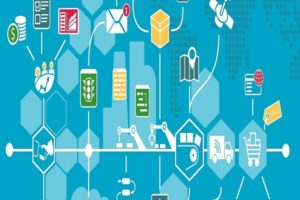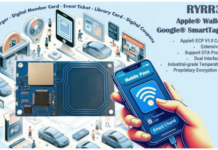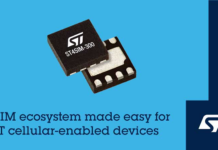
In 2017, there will be 8.4 billion connected things in use worldwide, according to Gartner, up 31% from last year. Total spending on endpoints and services will reach almost $2 trillion in 2017. The Internet of Things or IoT has been rapidly adopted for both consumer and business applications and is going through some growing pains. New technologies and attempts at standardization and simplifications are also changing the IoT landscape.
Analytics and Artificial Intelligence (AI) emerge as catalysts of IoT adoption
The business potential of the IoT and benefits such as higher efficiencies and improved customer relations, largely depend on timely and productive analysis of the mountains of data IoT sensors generate, says PwC.
This expanding flood of data will present businesses of all types with some key challenges. These include:
- Determining how to manage, analyze and create meaningful insights from all this data.
- Maintaining the accuracy and speed of analysis.
- Balancing centralization and localization of intelligence—how smart or dumb do you want the sensors and devices to be?
- Balancing personalization with the need to maintain the privacy and confidentiality of data.
- Maintaining security in the face of growing cyber risks and threats.
AI and machine learning can be used to apply to big data the algorithms that analyze data streams in real- or near real-time, making IoT data available for timely decision-making, says Juniper Research. In addition, there is now a growing need for databases to address complex spatio-temporal queries. As the relationships between connected “things” develop in terms of complexity, both space and time need to be considered as factors when analyzing data.
While tried and true methods of data mining are helpful, new AI-driven approaches can move companies to a whole new level of gaining insights from IoT data. For example: Better understanding of images on the screen with deep learning applied to computer vision and analyzing audio files and sonic data about the environment
AI can also play an important role in the areas of threat intelligence. Juniper Research notes that cybersecurity vendors are increasingly shifting to new ways of eliminating false positives and information overload for information security professionals by using new AI tools and automating much of the threat analysis process.
But ABI Research raises concerns about “over-automation,” the danger that arises from either a) trying to automate certain security processes that should not (at least for now) be automated or b) facing difficulties in automating certain tasks which might complicate security operations and overall orchestration, especially in cases of a perceived threat.
Cybersecurity continues to be a threat to rapid IoT adoption
Gartner placed security at the top of its list of top 10 IoT technologies for 2017 and 2018. Protecting the Internet of Things is difficult because many “things” use simple processors and operating systems that may not support sophisticated, modern security approaches.
A recent survey by the Ponemon Institute found that most respondents believe their systems will fall victim to an IoT cyber attack but few feel prepared for, or are really doing anything to thwart such threats:
- 76% say a DDoS attack involving an unsecured IoT device is likely to occur within the next two years.
- While nearly all of those surveyed believe a security incident related to unsecured IoT devices or applications could be catastrophic, just 44% say their organization has the ability to protect their network or enterprise systems from risky IoT devices.
- Only 25% of respondents say the board of directors wants assurances that IoT risks among third parties is being assessed, managed and monitored appropriately.
Forrester lists the following challenges to achieving a secure IoT: Many IoT devices lack basic security requirements; there is a plethora of IoT standards and protocols, which creates security blind spots; the scale and scope of IoT deployments hinder visibility into security incidents; and there is a lack of clarity of responsibility regarding privacy and security.
Forrester also makes the following observations and recommendations: IoT security requires an end-to-end approach; encryption is an absolute must; IoT security scenarios place a premium on scalability (dealing with the sheer number of devices); security analytics will play a significant role in IoT security solutions; IoT standards are important catalysts but still need time to mature.
Juniper Research believes that security will play a major factor in holding the consumer IoT back. With significant media coverage of IoT security incidents and concerns, the wider public will become more cautious. Addressing security concerns will in turn raise device costs, further slowing down adoption.
Given the rising number of highly-visible consumer IoT-related security breaches, cybersecurity expert Bruce Schneier has recently called for government regulation of the IoT, concluding that both IoT manufacturers and their customers don’t care about security.
IoT platforms and partnerships rise to simplify IoT adoption
IoT platforms help simplify the process of developing, connecting, controlling, and capturing insight from IoT-enabled products and assets. Forrester defines IoT platforms and Linux IoT device management as software solutions that connect to and manage smart devices and infrastructure to integrate operational data and control into business and customer processes.
IoT software platform vendors incorporate a diverse array of functionality into their platforms, natively or via partnerships: Creating and managing the link from the device to the internet; protecting IoT devices, data, and identity from intrusion; controlling the provisioning, maintenance, and operation of IoT devices; transforming data into timely, relevant insight and action; and developing applications and integrating with enterprise systems.
ABI Research calls these platforms “IoT Marketplaces.” IoT suppliers are leveraging ecosystem partnerships, ABI says, to provide end-users with a one-stop-shop portfolio of hardware, software, and services. These emerging IoT Marketplaces not only simplify IoT solution creation and adoption, but they also facilitate supplier and buyer interactions, ultimately creating open networks that encourage innovation. To reduce the friction that enterprise developers encounter when developing IoT solutions, IoT Marketplaces need to effectively address all components of the IoT value chain.
In its recent analysis ranking more than 500 companies on their IoT service capabilities, ABI Research found that both partner programs and their member companies continue to mature in their IoT offerings, with 59% of listed organizations receiving a high IoT maturity grade. This is nearly double the number of organizations that received a high maturity ranking when ABI Research first analyzed these IoT ecosystems in September 2015. This increase in IoT maturity stems in part from the actions of partner program managers who offered their members access to training and certification programs.
New IoT applications will transform the retail industry
New IoT technologies and applications promise to make a big impact on both customer relations and supply chain management in retail. IoT allows retailers to understand the consumer on an individual level. Previously, assumptions have been made on a macro level. For example, Bluetooth beacons can be used to track consumers’ movements in the store, enabling retailers to determine dwell time by the amount of time a user’s smartphone is registered to a nearby beacon.
Improving the retail customer’s experience in the store can also be achieved with emerging IoT technologies. For example, the digital sign or Electronic Shelf Label enables the retailer to apply dynamic pricing to products, based on data fed into an analytics backend system. Another example is the zero-service checkout, pioneered by Amazon in its new Amazon Go store, where sensors replace the traditional physical checkout.
Many of the initiatives aimed at improving the customer experience will rely on greater insight into the supply chain, alongside the ability to react quickly to near real-time information. Furthermore, supply chain efficiencies should be a key goal for retailers in terms of reducing cost, waste and improving relationships with suppliers. Juniper Research expects that RFID, now at a low enough price point for mass deployment, will re-emerge as the industry’s “killer app,” becoming the key factor in the IoT retail ecosystem.
In a recent survey, ABI Research found that 62% of retail respondents show a high willingness to adopt smart retail technologies, especially Bluetooth and Wi-Fi beacons, which they view as having the biggest impact on digitization. However, familiarity with nascent technologies like VLC/LED, inventory tracking, queue and process management, electronic labels, wearables, 5G, AR, blockchain, and the related technology startup ecosystem is limited. Artificial Intelligence is mainly seen as a way to improve traditional analytics (ranked highest by 24% of respondents), not as a disruptive technology driving machine vision for automated video analytics (6%) and last-mile delivery via driverless vehicles, drones, and robots (6%).
Source: straighttalk.hcltech.com


















